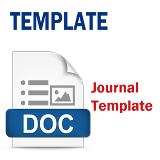MAPPING OF LAND USE CHANGES AND ALIGNMENT OF SPATIAL PATTERN PLANS IN PADANG CITY
Abstract
Changes in land use in accordance with spatial pattern plans are a challenge for the government as the population in an area increases, resulting in increased land requirements. This greatly influences the spatial pattern plans that have been planned previously. These land use changes can be obtained from Remote Sensing data which has the advantage and ease of obtaining land use information. This research uses Sentinel-2A satellite image data for 2017 and 2023. The objectives of this research are (1) To determine the ability of Sentinel-2A imagery to interpret land use (2) To determine changes in land use in 2017 and 2023 (3) To find out the alignment of land use identification with the Padang City spatial pattern plan. The method used in this research is a quantitative method with an approach spatial (spatial approach). The method used for land use classification is the manual digitization method (on screen) and land use area calculation using the Geometry Calculator tool in ArcGIS 10.6.1 software. The research results show the ability of Sentinel-2A imagery to produce 15 land uses, namely highland forest, residential/mixed buildings, rivers, cultivated open land, rice fields, dry land seasonal crops, bushes and thickets, mining, runways, ports, buildings industry and trade, grass, mangrove forests, savannas and stretches of coastal sand. In a period of 5 years there were 13 land uses that experienced changes, namely highland forests, residential/mixed buildings, open cultivated land, bushes and shrubs, mining, industrial/commerce buildings, dry land seasonal crops, rice fields, mangrove forests, stretches of beach sand and grass. The harmony between the land use of Padang City and the Padang City Spatial Pattern Plan is dominated by harmony, but there are also those which are not in harmony, namely highland forests, residential/mixed buildings, rice fields, dry land annual crops and mining.







